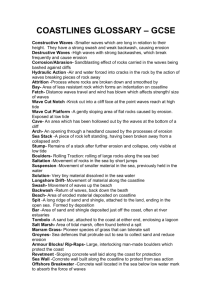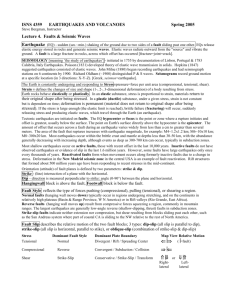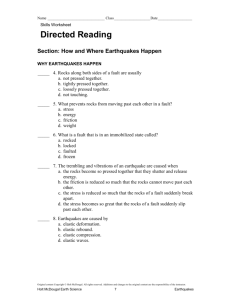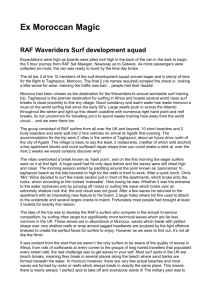P1b_Statements
advertisement
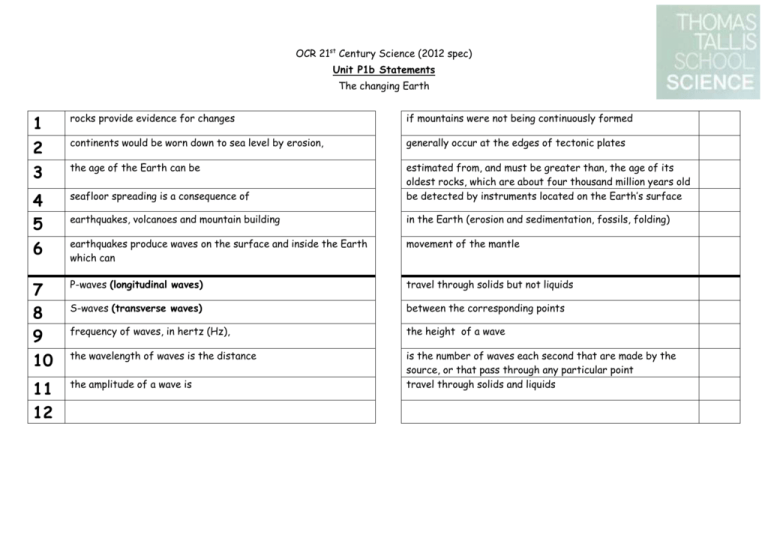
OCR 21st Century Science (2012 spec) Unit P1b Statements The changing Earth 1 2 rocks provide evidence for changes if mountains were not being continuously formed continents would be worn down to sea level by erosion, generally occur at the edges of tectonic plates 3 the age of the Earth can be 4 5 6 seafloor spreading is a consequence of estimated from, and must be greater than, the age of its oldest rocks, which are about four thousand million years old be detected by instruments located on the Earth’s surface earthquakes, volcanoes and mountain building in the Earth (erosion and sedimentation, fossils, folding) earthquakes produce waves on the surface and inside the Earth which can movement of the mantle 7 8 9 10 P-waves (longitudinal waves) travel through solids but not liquids S-waves (transverse waves) between the corresponding points frequency of waves, in hertz (Hz), the height of a wave the wavelength of waves is the distance 11 12 the amplitude of a wave is is the number of waves each second that are made by the source, or that pass through any particular point travel through solids and liquids OCR 21st Century Science (2012 spec) Unit P1b Statements The changing Earth 1 2 rocks provide evidence for changes if mountains were not being continuously formed 2 continents would be worn down to sea level by erosion, generally occur at the edges of tectonic plates 5 3 the age of the Earth can be 3 4 5 6 seafloor spreading is a consequence of estimated from, and must be greater than, the age of its oldest rocks, which are about four thousand million years old be detected by instruments located on the Earth’s surface earthquakes, volcanoes and mountain building in the Earth (erosion and sedimentation, fossils, folding) 1 earthquakes produce waves on the surface and inside the Earth which can movement of the mantle 4 7 8 9 10 P-waves (longitudinal waves) travel through solids but not liquids 8 S-waves (transverse waves) between the corresponding points 10 frequency of waves, in hertz (Hz), the height of a wave 11 the wavelength of waves is the distance 9 11 12 the amplitude of a wave is is the number of waves each second that are made by the source, or that pass through any particular point travel through solids and liquids 6 7








